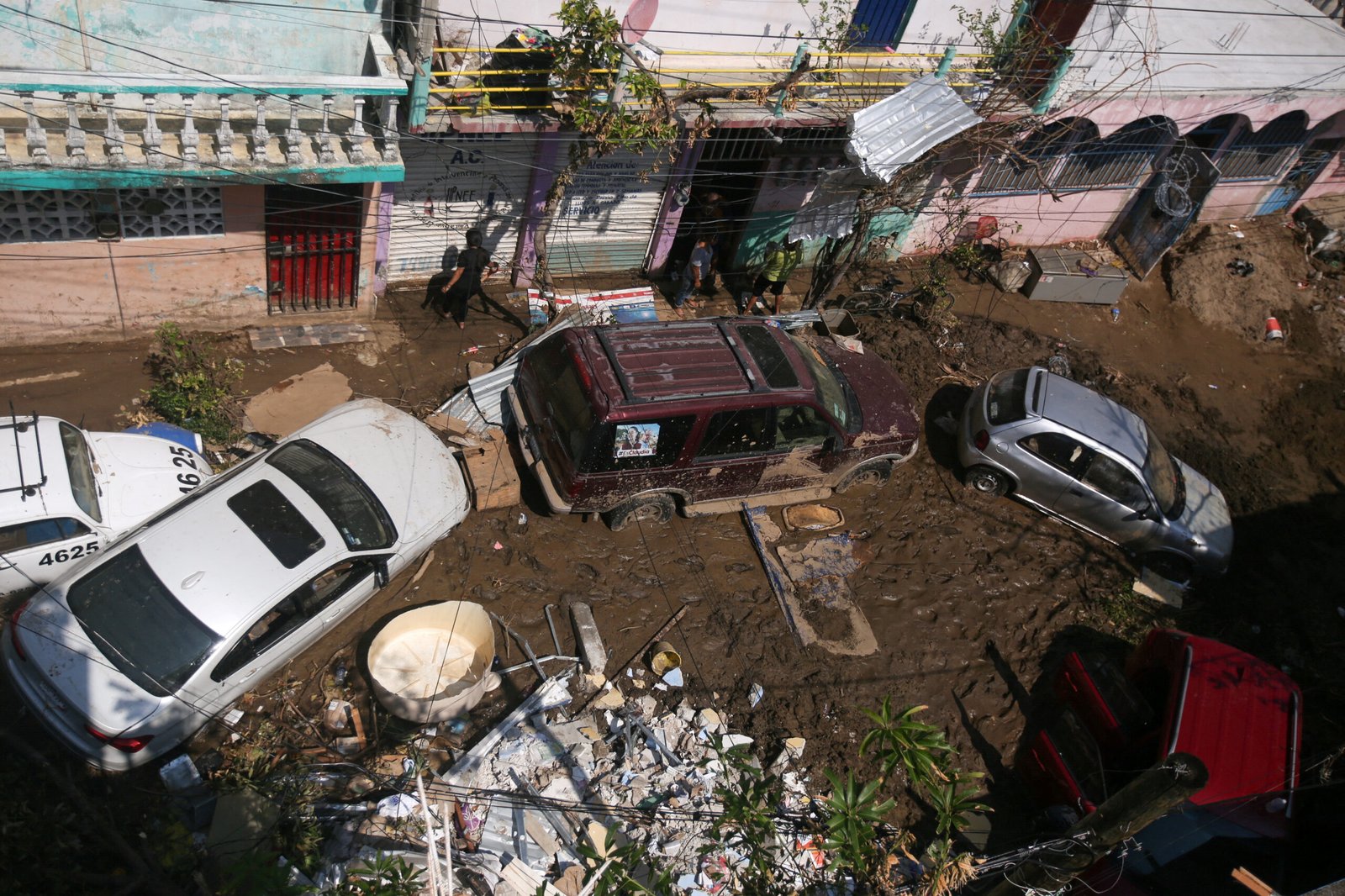ACAPULCO, Mexico (Reuters) – The devastating aftermath of Hurricane Otis, a catastrophic Category 5 storm that pummeled the Mexican Pacific resort city of Acapulco, has brought the toll of dead and missing to almost 100, according to authorities in the state of Guerrero, who made the grim announcement on Monday.
Last week, Hurricane Otis unleashed its fury on Acapulco with winds reaching a staggering 165 miles per hour (266 km per hour). The hurricane inundated the city, tearing the roofs from homes, hotels, and businesses, submerging vehicles, and severing vital communications, roads, and air connections. As desperation mounted, looting incidents began to plague the city, where nearly 900,000 people reside.
Evelyn Salgado, the governor of Guerrero, which encompasses Acapulco, reported that 45 individuals had lost their lives, while 47 were still unaccounted for.
A day earlier, Mexico’s federal civil protection authorities had cited 48 fatalities, with 43 in Acapulco and five in the nearby area of Coyuca de Benitez. Among the deceased, there were reports of a US citizen, a Briton, and a Canadian, according to Guerrero’s government.
Even on Monday, many of Acapulco’s residents found themselves grappling with the ruins of their lives. Rumualda Hernandez, a 62-year-old resident from the Renacimiento neighborhood located a few miles inland from the coast, pleaded for assistance from the government. She had to walk ten blocks from her devastated home to obtain water from a cistern to wash mud-covered clothes.
Hernandez recalled the fear she experienced as floodwaters surged above her head during the height of the storm, saying, “I thought I was going to die.”
Concerned about missing colleagues and friends, fishermen and tourism yacht workers congregated at Acapulco’s Playa Honda on Sunday. They expressed worry that the authorities were not doing enough to locate those who were unaccounted for. Luis Alberto Medina, a fisherman, mentioned his ongoing search for six individuals who worked at the harbor. He shared, “It was really horrible. We’ve already found the bodies of others.”
Governor Salgado, during a phone conversation with President Andres Manuel Lopez Obrador, provided updated statistics. The President, speaking at a regular government press conference, urged local authorities to ensure the delivery of essential supplies to Acapulco’s population.
Estimates suggest that the hurricane’s damage could reach as high as $15 billion. Mexico has deployed around 17,000 members of the armed forces to maintain order and facilitate the distribution of food and supplies in Acapulco. Additionally, ATM machines in the city have also been impacted.
The finance ministry announced plans to establish two service points within branches of an armed forces development bank in Acapulco, allowing people to withdraw cash.
Access to food and water remains a significant challenge, and the retail group ANTAD called upon the government to intensify efforts to prevent looting at stores run by its members, which include Soriana and Chedraui. ANTAD released a statement condemning acts of robbery and asserting that there is no justification for such behavior.
In the La Frontera neighborhood, a line of approximately 150 people waited for water provided by a local authority. The queue snaked through muddy streets, and residents with empty water containers expressed frustration at the hours-long wait. One resident, Emilia Rojas, observed the large number of people and lamented, “Look how many of us there are. We’re so many. This water isn’t going to be enough.”
On a nearby street, Perla Rubi noted the uncomfortable wait and the rising desperation among people, saying, “We’ve been here since dawn, since five in the morning, risking getting robbed, because now they’re assaulting people in the streets. Where’s the government help?”
The devastation struck Acapulco just seven months ahead of Mexico’s next presidential election. President Lopez Obrador reiterated his belief that critics were using the Otis disaster for political reasons, sparking controversy and criticism over his handling of the crisis.



